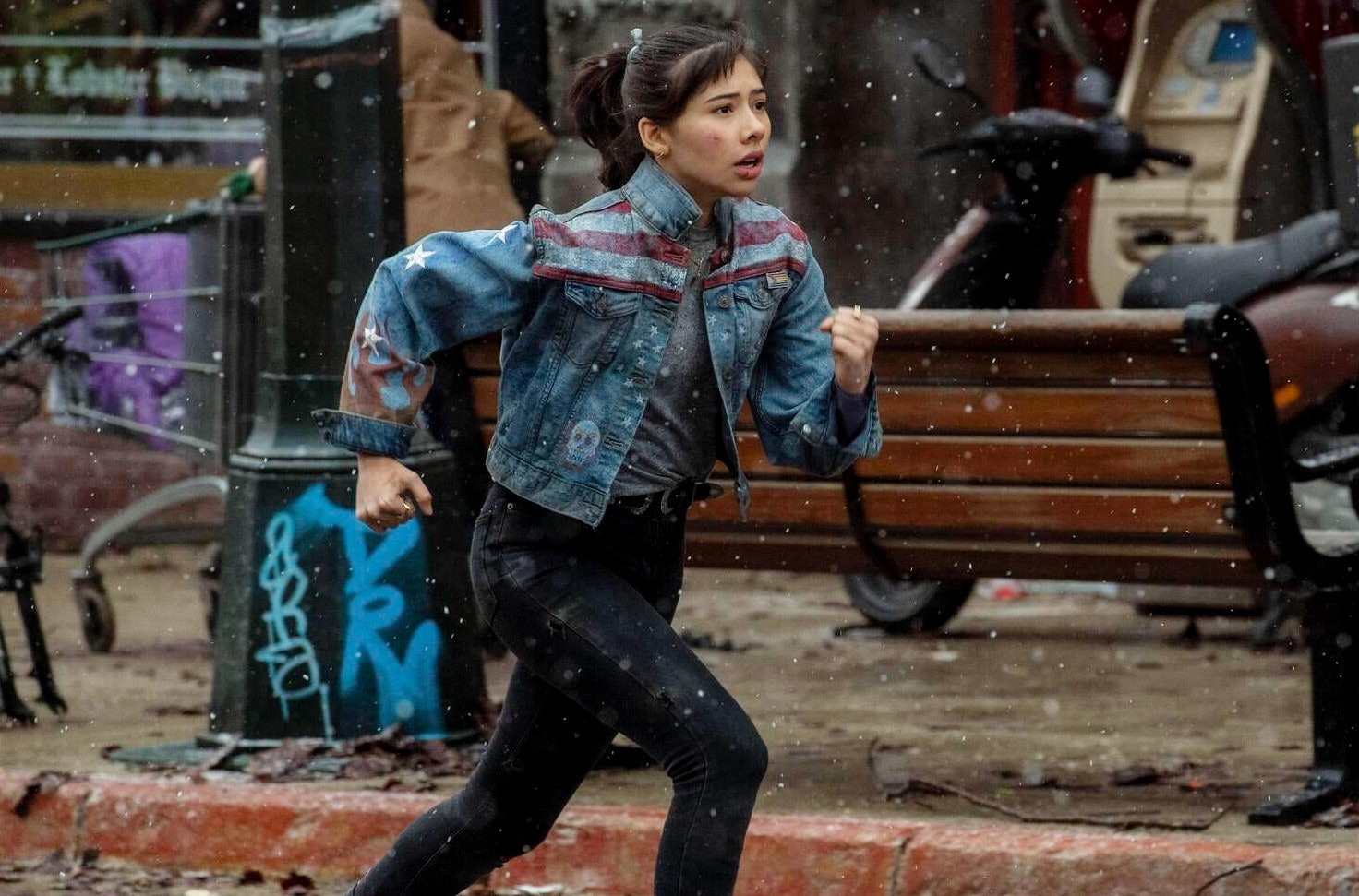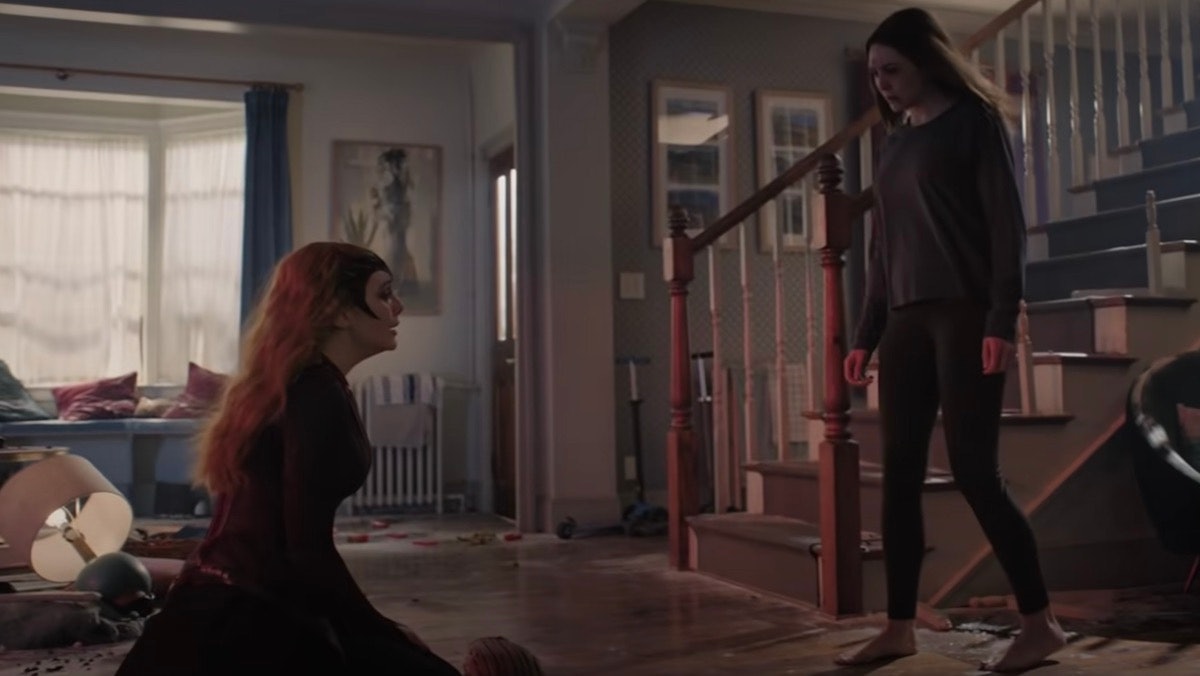
The Doctor Strange sequel juggles a lot of material, stuffing impressive CGI, tumbles through wacky realities, and director Sam Raimi’s distinctive campy macabre, all in a tight 126-minute run. The result is a striking visual extravaganza, bolstered by the creative vision of Raimi and outstanding performances from its leads and many guest stars.
However, the spring blockbuster is not the most compelling of the Marvel Cinematic Universe’s 28 (and counting) projects, banking too much on cinematic panache and fan service for box office success. Spoilers ahead.
In the sequel, Doctor Strange (Benedict Cumberbatch) and Wong (Benedict Wong) meet America Chavez (Xochitl Gomez), a mysterious world-hopping teen who is on the run from Wanda Maximoff aka Scarlet Witch (Elizabeth Olsen). Possessed by the Darkhold, Wanda goes on a bloody, witchy warpath to steal America’s powers so that she can travel to a universe where she can live happily with her sons, Billy and Tommy, who Marvel fans first met in WandaVision.
Unfortunately, Doctor Strange 2 essentially treats the stories it aims to tell as afterthoughts, fumbling especially with its portrayal of its female protagonists. The sequel woefully mishandles the anticipated introduction of America to the MCU and does not fully understand how to write its other leading lady, Wanda, as more than a cliché.
America Chavez’s rocky MCU debut

America Chavez/Miss America, a teenage supe capable of traveling to infinite realities, was introduced to Marvel Comics readers in 2011 in Vengeance No. 1. Her character’s instant popularity led her to join the ranks of the Young Avengers, and by 2017, she became the first Latina lesbian heroine to star in an ongoing Marvel series. Miss America brings representation of young Latina and queer women, specifically those who are curly-haired and dark-skinned, to a medium that has historically excluded gay people of color.
To say that a lot was riding on her depiction in the Doctor Strange sequel is an understatement. Unlike the comics, in which America Chavez is an older Brown cosmic hero adopted by a Puerto Rican family and proudly claims their heritage as her own, the movie had cast The Baby-Sitters Club actor Xochitl Gomez to play the superhero. By doing so, the sequel oddly retcons America Chavez to be Mexican, painting a calavera (Day of the Dead sugar skull) on her costume and inserting Mexican American slang in a couple of lines in Spanish.

Backtracking on the Mexicanness of the MCU’s version of America now would be absolutely ridiculous, given that Gomez is Mexican American herself. But who's to say America Chavez can’t be part Puerto Rican, part Mexican in future projects? The audience can surely handle a bicultural Latina if they can already handle her punching star-shaped holes to leap through the multiverse.
And while the movie confirms that America Chavez’s parents are two moms, there isn't a single indicator of the character’s sexuality except for a Pride flag pin on her jacket.

Representation concerns aside, perhaps the most egregious issue with America Chavez’s MCU debut was writing her in as a MacGuffin, only giving her a purpose in the last minutes of the movie’s third act. A character admired for her fierceness and capacity to handle her seemingly limitless powers in the comics (which go beyond interdimensional travel) is relegated to doe-eyed inexperience.
The MCU’s America is a veritable damsel in distress, up until Doctor Strange gives her a self-esteem boost to serve the final ka-pow against Scarlet Witch. The movie oddly concludes with America Chavez ditching her other motivations, like finding her moms, and instead has her learning the mystic arts at Kamar-Taj.
Plans for a Young Avengers film or TV series haven’t been confirmed yet, but Phase 4 of MCU’s constant content churn seems to be setting up the franchise's next superteam, during which the writers can strengthen America’s character. Moreover, fan reactions to Gomez’s take on America, regardless of the faults of Multiverse of Madness’ script, could further pave the way for an America Chavez standalone series on Disney+, where the character could be paid her dues.
As for Wanda Maximoff, though, vindication is possible but trickier.
An unrecognizable Wanda Maximoff
Will viewers be forced to suffer through Wanda’s unresolved grief and trauma in every MCU project she is featured in henceforth — with motherhood as her ultimate driver?
As fun as it is to see this overpowered woman, tenaciously portrayed by the scene-stealing Olsen, wreaking havoc on-screen, one wonders if Marvel can concoct any other plans for Wanda other than drowning her in sorrow and fixating her on a Mommie Dearest warpath.

We thought we had gotten enough of the “mad mama on a rampage” trope in WandaVision on Disney+ and that Wanda herself had learned a valuable lesson by the end — maybe don’t enslave an entire town to live out your twisted Bewitched fantasy as a coping mechanism? Doctor Strange 2, however, shows that the fable of Westview flew right over Wanda’s head.
Sure, the Darkhold is partly to blame for Wanda’s corruption in the Doctor Strange sequel, but hadn’t she already gone batty with the blows of losing her lover, Vision, and her brother, Pietro Maximoff/Quicksilver? It doesn’t help that much of Scarlet Witch’s source narratives are inherently misogynist: When Wanda snaps in the comics, particularly in the infamous House of M arc, she becomes female hysteria incarnate. For her, it’s suburban housewife and white picket fence or nothing.
Instead of doing something else with Wanda, Doctor Strange 2 doubles down on the whole “hell hath no fury like a woman scorned by life” thing. The film transforms her into an unrelenting villain and then makes Unreasonable Wanda the movie's entire plot.
This Wanda in Doctor Strange 2 utters that she would never hurt her children. But she has zero remorse for wanting to murder an innocent teenager (America Chavez), nor does she seem to mind orphaning Billy and Tommy in another universe to get her way.

Rumors of Olsen’s contract extension with Disney— a whopping seven years! —are merely rumors, so we can’t rely on Olsen being on board for future MCU projects without confirmation. Still, it seems silly to take out one of the most powerful characters in the Marvel universe, who could help incorporate the X-Men and mutants in the MCU while diving deeper into the witchy side of Marvel.
Bringing Wanda back to life won’t be an issue for a franchise known for flirting with resurrection. After all, in Doctor Strange 2, we see a poof of red chaos magic as Wundagore Mountain is tumbling down. The Darkhold may have been obliterated from the multiverse, but Scarlet Witch may have also saved herself from dying in Earth 616.
The problem with Wanda’s redemption, then, is that the MCU will have to take significant liberties with her de-girlbossification. The franchise will need to go beyond comics and previous MCU installments to give Wanda dimensionality.

The Inverse Analysis— There’s hope yet for a more robust and canonical characterization of America Chavez, and yes, even redemption and empowerment for Wanda Maximoff after Doctor Strange in the Multiverse of Madness.
Amending the portrayals of America and Wanda for future MCU appearances won’t be without its challenges or its creative demands, but here’s a suggestion on where Kevin Feige and co. can start: Hire more women to produce, edit, and write these projects — and, for the sake of Miss America, get someone in the room who is Afro-Latina and queer.
Doctor Strange in the Multiverse of Madness is now playing in theaters.







